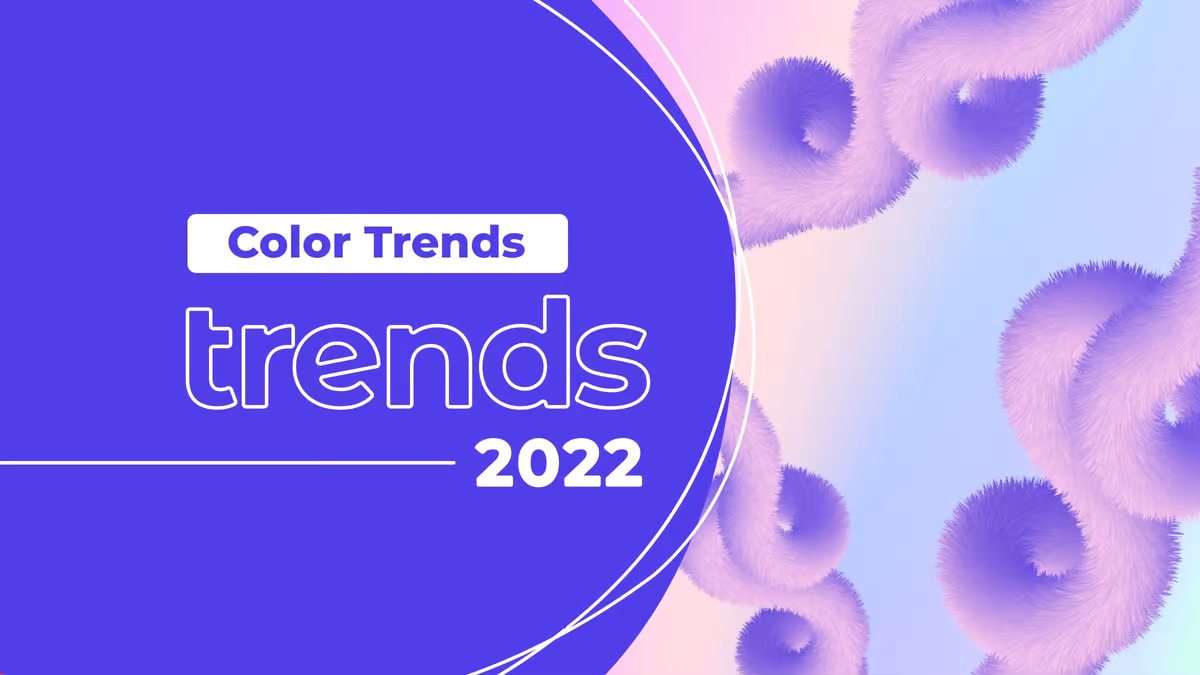ear on year, the newest trends guide designers in creating their designs. This year, the most popular styles are pointing toward creating engaging and entertaining designs. Dig into these hottest illustration style trends that will inspire your creative juices to flow:
1. Vintage and Retro
Illustrations inspired by scenes from the early 1900s to the ‘90s are making a comeback. This era from the past is known to be aesthetic, vibrant, and elegant. Retro-inspired illustrations are irresistible, so you can safely predict it to go mainstream this year. One of the clues to this trend is that social media platforms introduced a lot of retro filters for their apps. Vintage color palettes are also commonly used in web projects.
2. Muted and Earth Colors
Just like how infusing black or white color mutes a bright color, using nature-inspired or earth tones on design connotes a sense of nostalgia and comfort. Many people became health conscious because of the pandemic. Subdued colors are likely to be associated with being more organic and natural. Both attributes are linked to being healthy and eco-friendly, which plenty of consumers prefer these days.
3. Interactive Design
Many people who went homebound because of the restrictions and lockdowns imposed by the government have come to appreciate technology even more. Brands are constantly looking for ways to use technology in creating interactive designs that bring forth a sense of tactility, albeit virtually. It helps form better experiences that entertain the audience.
4. Realism
Talented artists started a trend to capture reality in a naturalistic manner. You may recreate the same illustration style by adding immense details to the subject matter, accuracy in composition, and a perfect portrayal of emotion.
5. Escapism
As most people struggle with being stuck at home for more than two years, designers have found the perfect way to survive creatively. They forayed into the natural world with an imaginative approach. They create fantastical worlds as a getaway. The most noticeable features of escapism are the tantalizing settings, whimsical colors, and the intricate designs limited only by the expanse of the artists’ imaginations. The results are intriguing imagery that the viewers like to explore and get lost in the moment themselves.
6. Fun and Engaging Imagery
Playful and engaging illustrations are on the rise, as seen in static images given more dynamics. GIFs and animated illustrations are added to marketing campaigns to evoke a sense of vivacity that tends to be infectious.
7. Comic Book
Contemporary illustrators find traditional comic books inspiring in character creation, style, and story delivery. Laying the story panel by panel is an excellent way to challenge creative thinking. Illustrations are most exceptional in representing moods and themes that align with the stories of graphic novels.
8. Fantasy
The beauty of fantasy illustrations is that they are moody and enchanting. Supernatural scenes enthuse the style in fables, legends, and mythologies. The enthralling quality stems from the moody atmospheres infused with exceptional depth of detail. Such a combination effectively immerses the viewer into an alternate universe. Most fantasy illustrations depict dark and action themes. It is why it is common to see this style in the gaming and film industries. With book illustrations, the fantasy style brings the context of a fictional story alive with magical worlds, imaginative creatures, and alien landscapes.
9. Fashion
The fashion design industry is one of many fields that use sketches to communicate concepts. The fashion illustration style is a nod to sketches made to showcase clothes. They do multiple sketches until every element is complete. They create sketches fast, and the illustrations are defined by adding rough lines. Although a generally loose aesthetic is applied, fashion illustrations burst with couture, attitude, and culture. These qualities make other artists want to replicate the fashion style by adding an aesthetic feature to their illustrations.
10. 3D
The accessibility of 3D design software pushes more illustrators to discover this technique. 3D compositions effectively convey concepts even if they only have simple geometric illustrations and textures. Realistic illustrations in 3D are seen a lot in creating life-like characters and product mock-ups. It gives brands more leeway in making creative presentations to showcase products.
11. Anti-design
A visually chaotic, unpredictable, and non-conformity to traditional design cues are the aptest descriptions of an anti-design style. It creeps everywhere from Spotify album covers, Youtube ads, digital publications, and product packaging. Conventional aesthetic tastes based on beauty norms are constructed by somebody else. Shunning traditional design principles is a liberating experience for illustrators who favor such style.
12. Psychedelic
Although you can include this style in the Retro category, it is so definitive that it seems fitting also to acknowledge its uniqueness. The vibrant colors dotted by kaleidoscopic and spiral patterns make a psychedelic design intricate and maximalist. Other hallmark characteristics of this style are groovy typography and fantasy imagery. It is visually and emotionally stimulating and can potentially open one’s mind. There are also endless variations to this type of print, so it is adequate to use as an illustration style.
13. Cartoons
Illustrations are typically playful graphics meant to make a message sound friendly and organic. On the other hand, artists use Cartoons to make visual content easier for the eyes. Using a cartoon style in creating illustrations allows marketers to persuade, inform, and influence customers better. This style effectively expresses emotion which can help enhance the brand messaging efforts. It nails the attention faster so brands can connect to prospects more efficiently. The combination of these benefits ultimately boosts any business.
14. Flat
Upon researching current design styles, you might notice flat designs to be quite popular these days. For several reasons, it has become a staple in the web, graphic, and developer industries. First, the 2D features look bright and crisp on-screen and on print media. Another reason is that a flat illustration removes unnecessary clutter in the design because it uses simple options instead of strict design principles. It also usually uses bright colors that bring a positive mood. The simplicity of the icons, lines, colors, fonts and other elements makes flat illustrations look attractive.
15. Line Art
Like how a minimalist illustration style employs basic elements, line art is considered primitive yet effective at creating the most impact. Lines connotes speed and purposefulness, thus making them perfect to use in various ways when making illustrations. The clean lines, white space, and minimal detailing give a crafty yet refined design. It has become a massive trend online for a while now, yet this style is still used in many social media campaigns, logos, web design, and branding.
16. Animations
Content is king, they say, and video content, like animated illustrations, takes over the lion’s share. Videos are exceptional at conveying a lot of information within seconds. Converting illustrations into animations is not as costly as live-action productions. They are, however, influential in making a lasting and memorable impression. It is an effective method of breaking down a complex idea into a short story. This makes animated illustrations ideal for bringing the audience to connect and engage with the brand message.
Bonus: Tips for Finding a Unique Illustration Style
The digital illustration industry is growing steadily because illustrations are excellent at increasing user engagement and brand awareness. The different illustration styles are practical tools that drive customers to take action on your website or any agenda behind a design. It is a must that you find a unique illustration style to aid you in making your designs awesome and easier to comprehend.
To find the best style that will fit your personality as an illustrator, you have to:
Find Out What Inspires You
There is nothing more helpful in tapping your individual style than finding out what inspires you to create. Pick out themes that excite you the most. Assess what makes you tick, and it will be easier for your creative juices to flow. This would also allow you to focus on honing your skills and building your style as you think more creatively.
Consider the Competition
Developing a unique illustration style entails finding out what is already out there. It is a proactive approach to see what you can offer more.
Identify Your Ideal Client
Having an illustration style that you can use for work will make it effective. Visualize the kind of projects you want to take on in the future. Check out websites of clients having almost the same type of projects. See the different elements in the illustrations and assess how you can make them better. You can also use it to compare your work and determine if you need to improve your style to fit those kinds of clients.
Be Flexible
Although you worked hard to develop a personal style, being flexible and working within a client’s specifications wouldn’t hurt. It is actually by having a cohesive style that clients become attracted to the kind of illustrations you do. You are more likely that you will attract an ideal set of clients. But it is also possible to have someone curious about how you can maintain the same level of professionalism and expertise even if you are out of your comfort zone.
Practice A Lot
The only way to master what you do best is by practicing it until you are more than satisfied with the results. Your style will undoubtedly show if you can make it like second nature to use it on every design.
Conclusion
Graphic design extensively uses stock photos and other images. It is no surprise then to have overly used assets in projects. More and more designers turn to illustrations in making clever and creative designs. The reason is primarily to ensure a unique and personalized approach to the design.
Individuality is always the biggest strength in design. The customizable quality of illustrations makes it one of the most effective means of creating brand awareness and facilitating better responses from the audiences. It is fascinating how illustrations can reflect a brand’s personality so that the design speaks directly to the target customers.
Since there are many to choose from, we hope that having this list of trendy illustration styles will influence your exceptional designs this year. We’d love to know which trends you are most thrilled about and excited to try in your brand strategy!






